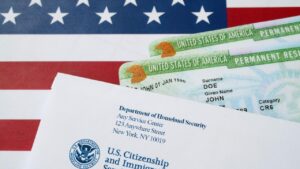Navigating the F-1 Visa Application Tips: Strategies for International Students Amidst Limited Slots
The application process for an F-1 visa for international students seeking to study in the US has become highly competitive over the years. There are two important reasons that have brought about this increased competitiveness—namely, limited availability and greater scrutiny. Quotas on the issuance of F-1 visas every year by the U.S. Department of State are supposed to be in place. However, the trends in the recent past have shown that these quotas have not matched the increased inflow of foreign students. Meanwhile, visa applications are being put through minute scrutiny, leading to longer processing times and a higher rate of rejection. Keeping these challenges in mind is very instrumental to any prospective student seeking to successfully navigate the process of obtaining an F-1 visa. To enhance your chances, here are some strategies that will help: 1. Strong Academic Profile Keeping a high GPA throughout reflects commitment towards academics and the ability to succeed in the rigorous U.S. education system. Admission officers and visa interviewers seek students who have consistently turned in fine academic performances, which is indicative of discipline and a strong work ethic. 2. Standardised Test Scores Some of the key evaluation criteria about your readiness for college include your ability to pull off strong scores in standardised tests like the SAT or ACT. These examinations are designed and developed to test whether you can think critically, solve problems, and if you are ready for college. 3. Powerful application essay Craft a compelling personal statement and application essays that give expression to your unique talents, goals, and reasons for pursuing a U.S. education. The well-written narrative of how studying in the U.S. would merge with your academic and professional aspirations can set you apart from other applicants. 4. Targeted Selection of Universities Research some of the universities that have a big community of students on F-1 visas and who generally have high visa approval rates. Look for those that really have an established support network for international students. Such universities are usually better positioned to guide you through the visa process and provide other resources for your academic and personal growth. 5. Apply Early Make your visa application in advance to avoid the last-minute rush. The process for a visa application, at times, may be lengthy, and applying early gives time for the best possibility of getting an interview slot and time to fix potential problems that could crop up. 6. Professional Guidance Consult experienced educational consultants who can help you with the whole application process, from visa strategies to interview preparations. They are well aware of how things go and can help you in those matters to bring out the best in you. Other Tips on How to Prepare for an F-1 Visa Interview Get Familiar with Requirements Get up-to-date requirements about how to apply for an F-1 visa from the Department of State website to prevent delays or refusal. Prepare Thoroughly for the Visa Interview Prepare for this interview on your visa application. Speak confidently and clearly, and answer truthfully in your responses. Your responses should express your interest in studying in the U.S., the rationale behind choosing the programme you picked, and plans upon graduation. Prepare clear documents. Proving Finances Keep clear records of your financial resources so that you can prove your capability to afford educational expenses. Have at your disposal proof of financial documents in the form of bank statements, scholarship letters, or sponsorship letters. This will help to prove adequate funds towards fees for your support during studies and living expenses while in the U.S., which is a very important consideration in approving visas. University Support for F-1 Visa Applicants This means that aside from the students, it is also very important that the universities should be ready to support their students massively in applying for their visas. It means universities should explain what turn-around time they need for processing the applications and encourage students to apply early. That is, document requirements and admission decisions should be worked on diligently by the admissions team for smooth onboarding. This would include regular liaison with the students enrolled in the programme and also disseminating, without delay, any fresh information received by the U.S. Consulate in India. Proper relationship building with the Universities, and on their behalf with the U.S. Embassy in India and the U.S. Consulate, is of essence. Further, it is incumbent upon the universities to emphasise the early release of I-20s so that students are ready when visa slots open. Sharing the details of the visa information sessions conducted by the U.S. Embassy in India and EducationUSA was very helpful in keeping the students informed. Though obtaining an F-1 visa can be really overwhelming, with proper planning and strategic moves and strong support from universities, international students increase their chances for success.










